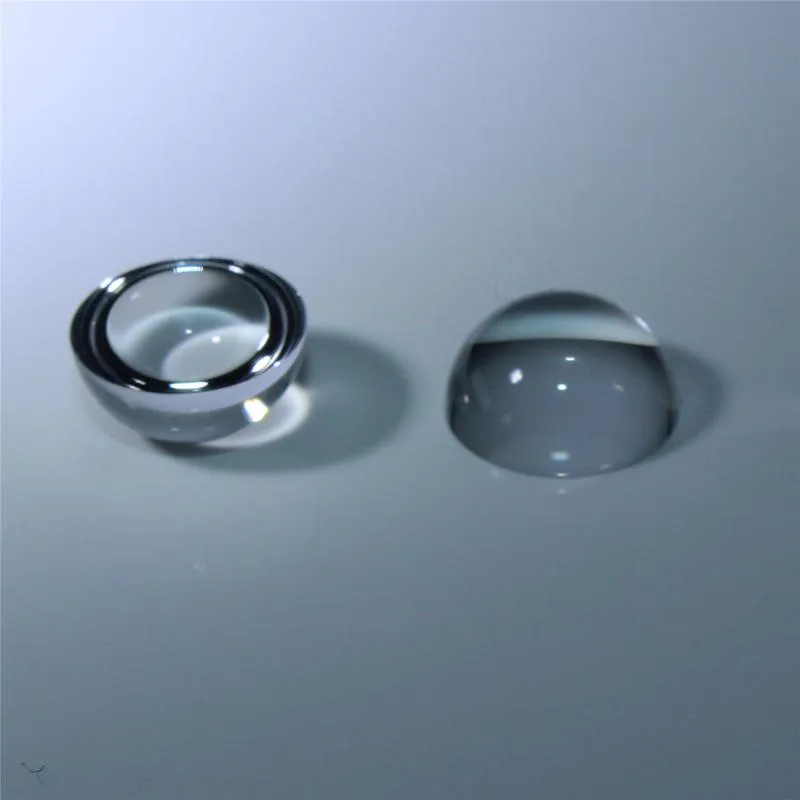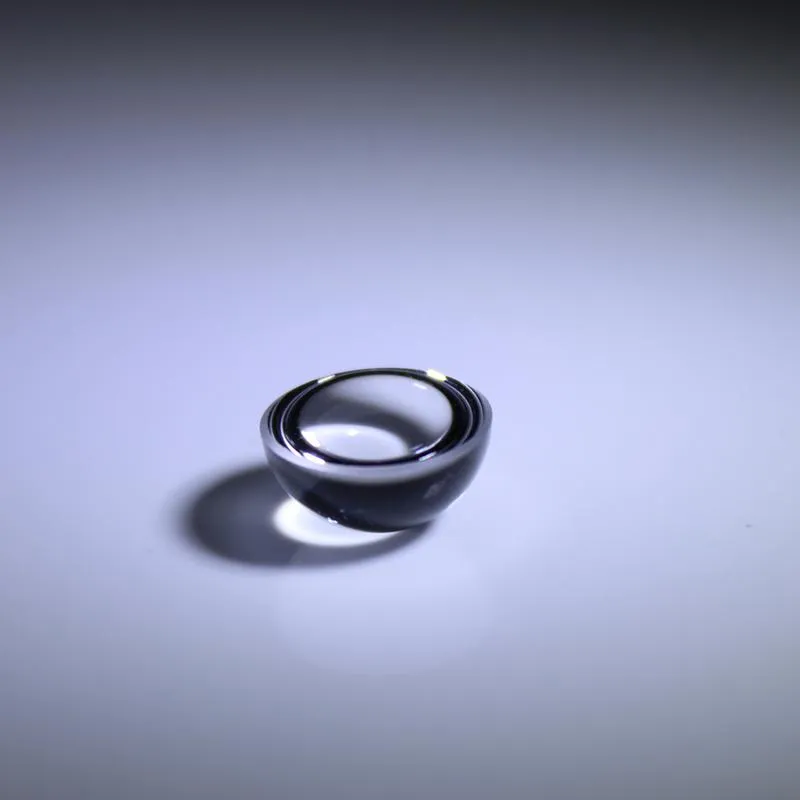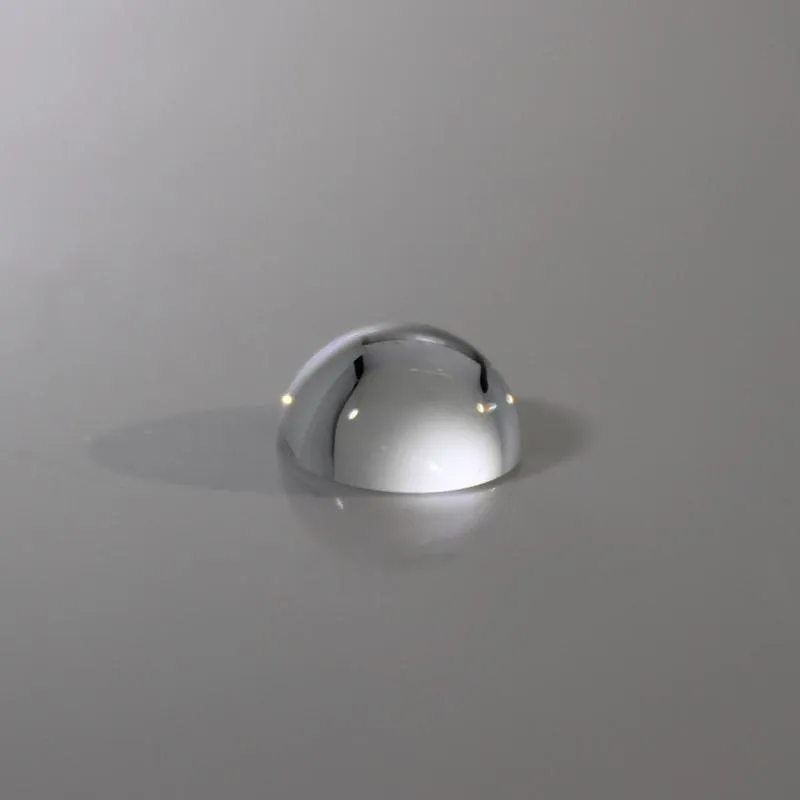Glass ball lens K9 for optical fiber coupling D 1mm 2mm 3mm 4mm 5mm 6mm 10mm
Diameter: 1mm, 2mm, 3mm, 4mm, 5mm, 6mm, 10mm
Tolerance: 0.001-0.003
Sphericity: 0.001
Surface Quality: 40/20
Coating: Optional
A Ball Lens consists of a highly transparent spherical ball, usually made of solid glass (fused silica, K9) or another optical material with index of refraction less than 2. Most ball lenses are made with small diameters – a few millimeters or even less than a millimeter.
What is Ball lenses?
Ball lenses are great optical components for improving signal coupling between fibers, emitters, and detectors. Sphere lenses are manufactured from a single substrate of glass and can focus or collimate light, depending upon the geometry of the input source.
Ball lenses are highly polished spheres made of optically transparent homogeneous materials. Carefully controlled manufacturing process produces spheres with precise diameters and unsurpassed surface quality.
What is application of spherical ball lenses?
Spherical Ball Lenses are commonly used for laser collimating and focusing, laser-to-fiber coupling, fiber-to-fiber coupling, and fiber-to-detector coupling. Larger spheres are easier to handle and ease the sensitivity of translational alignment. However, smaller spheres has the benefit of fitting into smaller packages.
How are ball lenses made?
They are manufactured from a single material, usually an optical glass with good transparency in the wavelength region of interest. A frequently used material is fused silica. Another variant are half-ball lenses, which are obtained simply by cutting ball lenses in half.

|
Glass Ball Lens |
||
|
Product Model |
Diameter (mm) |
Material |
|
VY_B001 |
1.00 |
K9 / Fused Silica/ Sapphire etc. |
|
VY_B002 |
2.00 |
K9 / Fused Silica/ Sapphire etc. |
|
VY_B003 |
3.00 |
K9 / Fused Silica/ Sapphire etc. |
|
VY_B004 |
4.00 |
K9 / Fused Silica/ Sapphire etc. |
|
VY_B005 |
5.00 |
K9 / Fused Silica/ Sapphire etc. |
|
VY_B006 |
6.00 |
K9 / Fused Silica/ Sapphire etc. |
|
VY_B007 |
7.00 |
K9 / Fused Silica/ Sapphire etc. |
|
VY_B008 |
8.00 |
K9 / Fused Silica/ Sapphire etc. |
|
VY_B009 |
9.00 |
K9 / Fused Silica/ Sapphire etc. |
|
VY_B010 |
10.00 |
K9 / Fused Silica/ Sapphire etc. |
|
VY_B011 |
11.00 |
K9 / Fused Silica/ Sapphire etc. |
|
VY_B012 |
12.00 |
K9 / Fused Silica/ Sapphire etc. |
|
VY_B013 |
13.00 |
K9 / Fused Silica/ Sapphire etc. |
|
VY_B014 |
14.00 |
K9 / Fused Silica/ Sapphire etc. |
|
VY_B015 |
15.00 |
K9 / Fused Silica/ Sapphire etc. |
|
VY_B016 |
16.00 |
K9 / Fused Silica/ Sapphire etc. |
|
VY_B017 |
17.00 |
K9 / Fused Silica/ Sapphire etc. |
|
VY_B018 |
18.00 |
K9 / Fused Silica/ Sapphire etc. |
|
VY_B019 |
19.00 |
K9 / Fused Silica/ Sapphire etc. |
|
VY_B020 |
20.00 |
K9 / Fused Silica/ Sapphire etc. |
|
VY_B022 |
22.00 |
K9 / Fused Silica/ Sapphire etc. |
|
VY_B023 |
23.00 |
K9 / Fused Silica/ Sapphire etc. |
|
VY_B024 |
24.00 |
K9 / Fused Silica/ Sapphire etc. |
|
VY_B025 |
25.00 |
K9 / Fused Silica/ Sapphire etc. |
|
VY_B026 |
26.00 |
K9 / Fused Silica/ Sapphire etc. |
|
VY_B027 |
27.00 |
K9 / Fused Silica/ Sapphire etc. |
|
VY_B028 |
28.00 |
K9 / Fused Silica/ Sapphire etc. |
|
VY_B029 |
29.00 |
K9 / Fused Silica/ Sapphire etc. |
|
VY_B030 |
30.00 |
K9 / Fused Silica/ Sapphire etc. |
|
VY_B035 |
35.00 |
K9 / Fused Silica/ Sapphire etc. |
|
VY_B040 |
40.00 |
K9 / Fused Silica/ Sapphire etc. |
|
VY_B045 |
45.00 |
K9 / Fused Silica/ Sapphire etc. |
|
VY_B050 |
50.00 |
K9 / Fused Silica/ Sapphire etc. |
|
VY_B060 |
60.00 |
K9 / Fused Silica/ Sapphire etc. |
|
VY_B070 |
70.00 |
K9 / Fused Silica/ Sapphire etc. |
|
VY_B080 |
80.00 |
K9 / Fused Silica/ Sapphire etc. |
|
VY_B090 |
90.00 |
K9 / Fused Silica/ Sapphire etc. |
|
VY_B100 |
100.00 |
K9 / Fused Silica/ Sapphire etc. |
|
VY_B110 |
110.00 |
K9 / Fused Silica/ Sapphire etc. |
|
VY_B120 |
120.00 |
K9 / Fused Silica/ Sapphire etc. |
People also ask
What are ball lenses used for?
Ball lenses are used particularly as beam collimators for optical fibers (fiber collimators) and for fiber-to-fiber coupling. They are also suitable for miniature optics with applications like barcode scanning, as objective lenses in endoscopy and for optical sensors.
What magnification does a ball lens have?
Ball lenses are highly transparent spheres made with optical glass. Some of the earliest microscope lenses — developed by Antoni van Leeuwenhoek — relied on surface tension to form small spheres from melted glass. These lenses achieved magnifications as large as 275x and were as small as 1.5 mm in diameter.
What is a half ball lens?
Ball lenses are completely spherical lenses most commonly used to couple light in and out of fibers. Half-ball lenses are hemispheres. We supply high precision grade-3 ball lenses, midrange grade-25 ball lenses and commercial grade-100 ball lenses offering all grades to suit any application.
What are lens balls made of?
This is why Lensballs or a crystal ball works so well at refraction. They are made from high quality glass that easily lets light pass through and keeps your image sharp and in focus.
Are lens balls any good?
The Lensball is one option on the market when it comes to buying a crystal glass ball. The image with the ball is crisp because of the use of better quality glass.
What lens should I use with a lens ball?
Any focal length or camera lens will work with lensballs — even your iPhone can take decent shots — but if you want to get really close to the glass, you’ll want a macro lens. If you want to be able to see the background and the scene around the lensball, go with a wide-angle lens.
What is a sphere lens?
A spherical lens. sometimes also known as a singlet, is an optical lens with a curved surface that causes light rays to converge or diverge. Spherical lenses are some of the most common lenses used, in part because they project images onto the sensor without affecting their aspect ratios.
Our Ordering Process
Send us your request with detailed specifications
Receive a commercial offer with terms and costs
After your approval, we handle manufacturing, quality control, and shipping
📦 Shipping
3-5 days in EU, from 10 days to USA
💳 Payment methods
Cash, Bank Transfer, Cards (Visa, Mastercard, Amex, Discover) and PayPal
💬 Questions?
Contact us via WhatsApp, phone, live chat or email




